

ACF Bonding Machine
An ACF bonding machine is the precision heart of every modern display factory and repair lab.
ACF—Anisotropic Conductive Film—contains microscopic nickel or gold-coated spheres suspended in an adhesive resin.
When heat and pressure are applied, those particles touch only in the Z-axis, giving vertical conductivity while remaining insulating horizontally.
The machine that choreographs this three-second micro-explosion must control temperature within half a degree, pressure within a tenth of a bar, and alignment within a single micron.
High-value keywords.:”ACF bonding machine”, “ACF bonder”, “LCD ACF bonding”, “pulse-heat ACF machine”, “TV panel ACF repair”
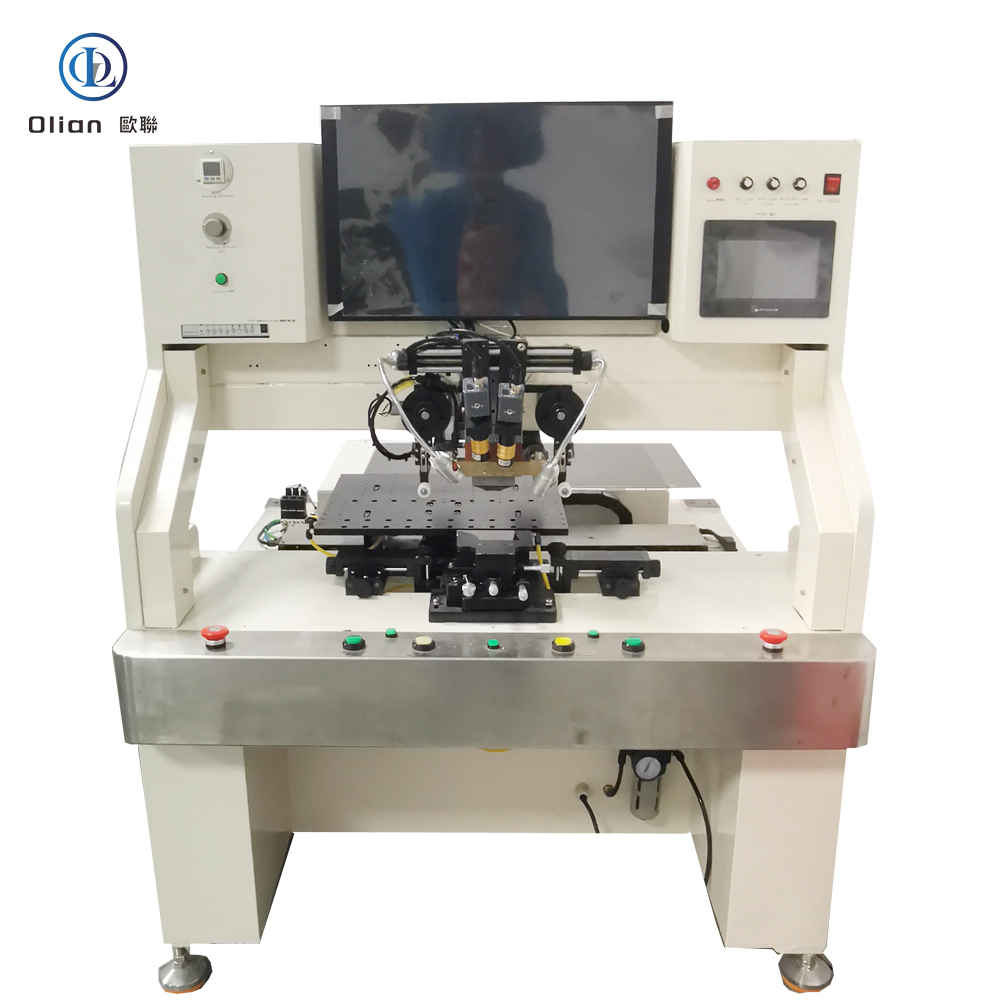
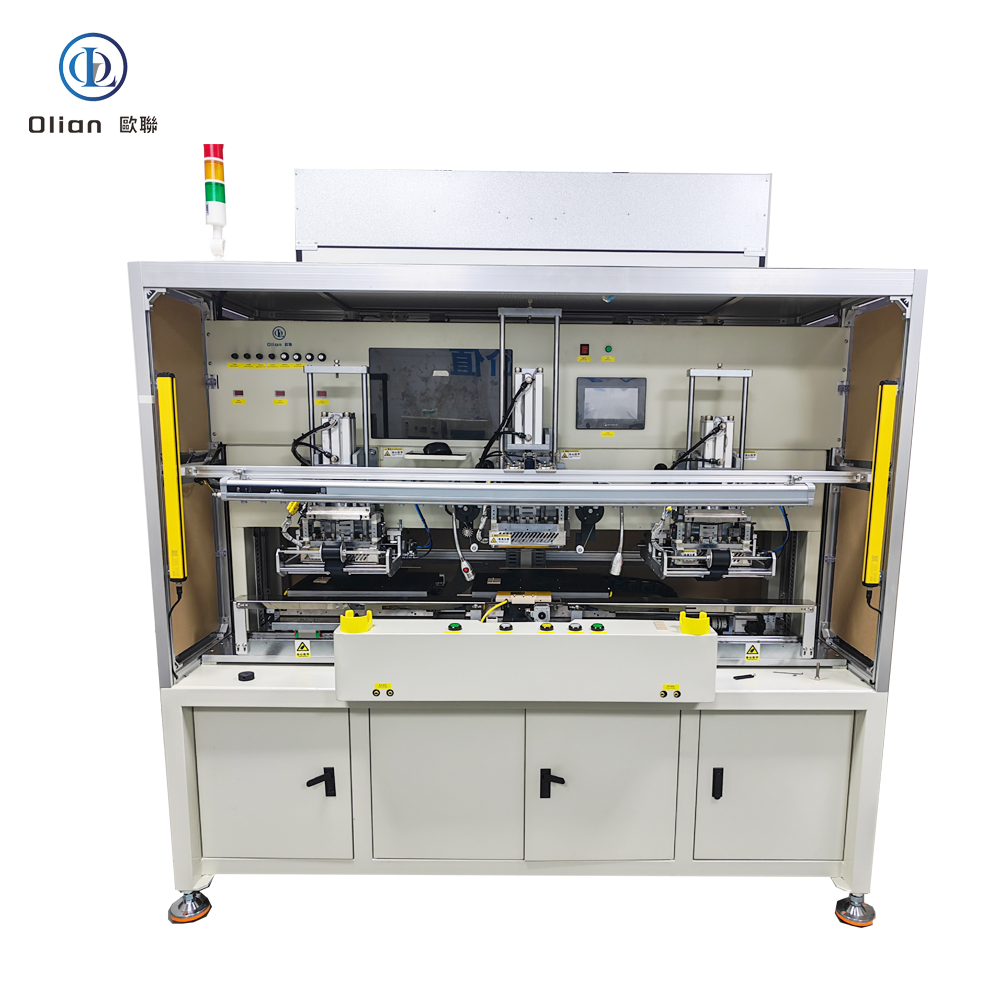


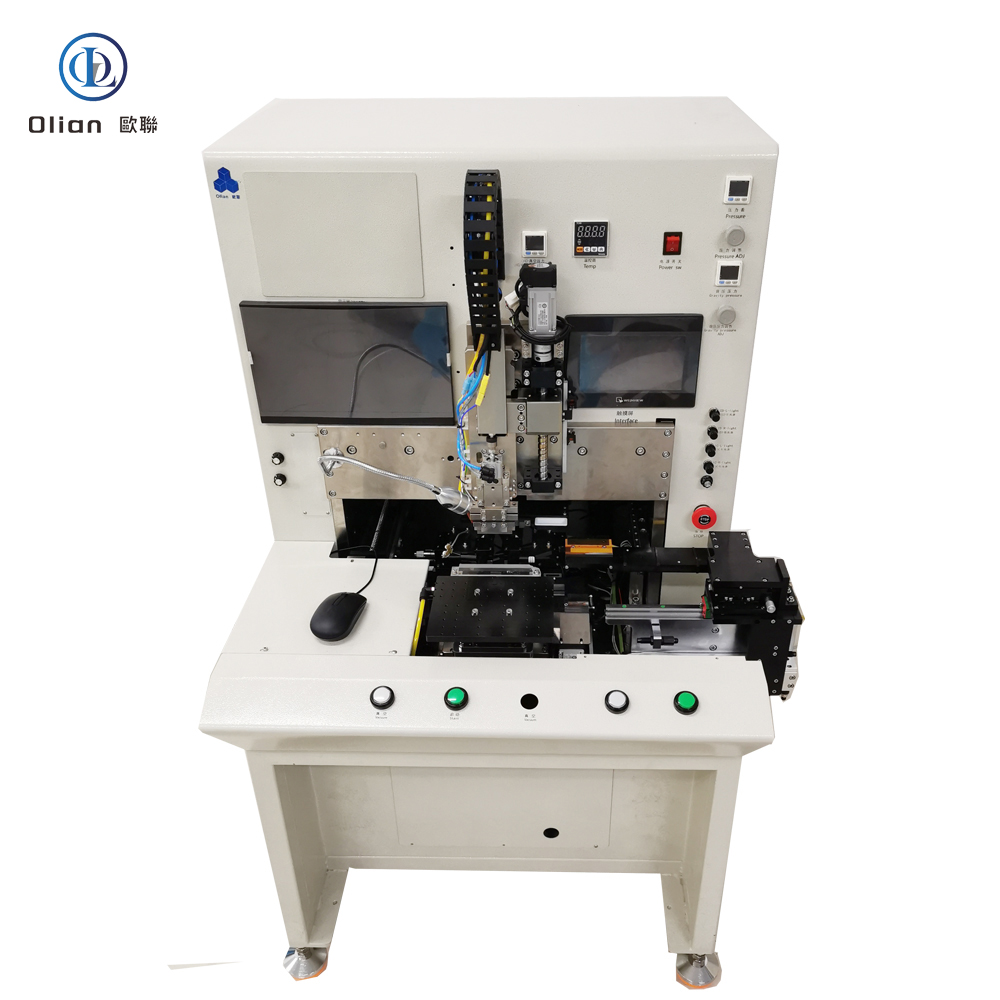

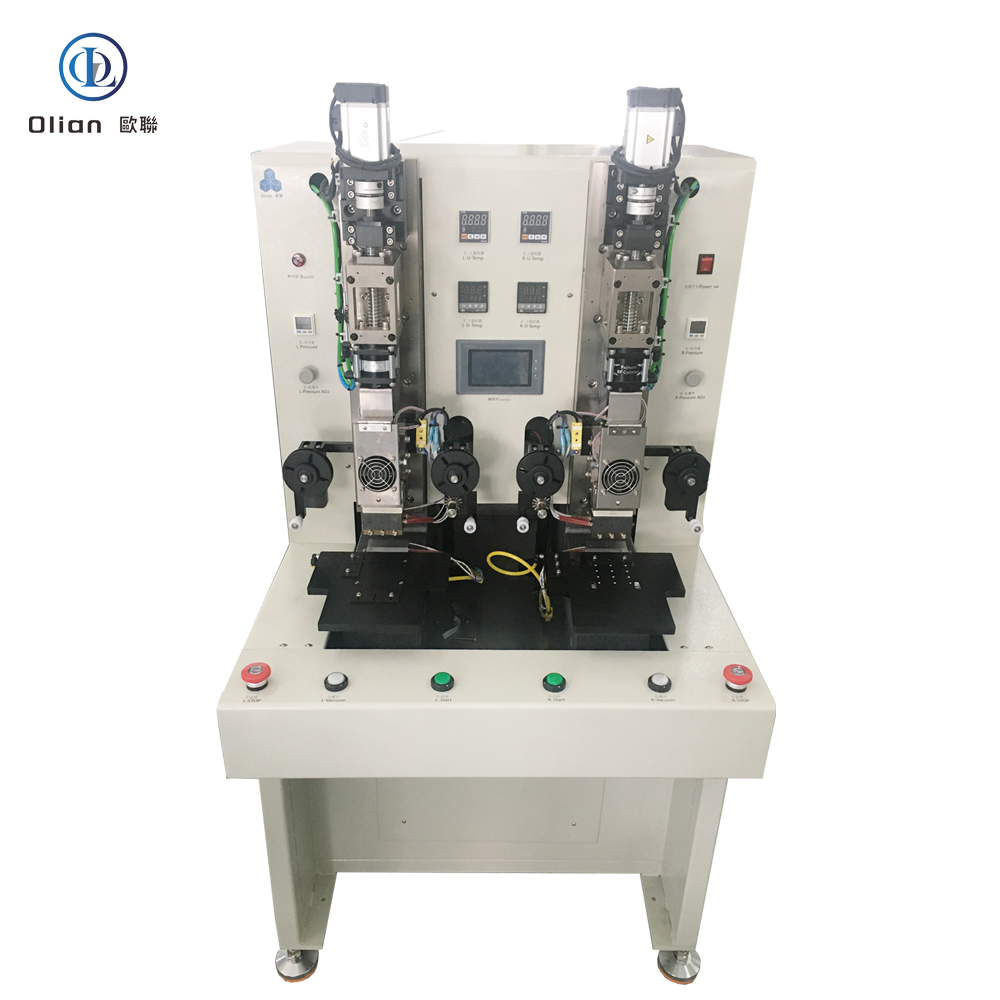

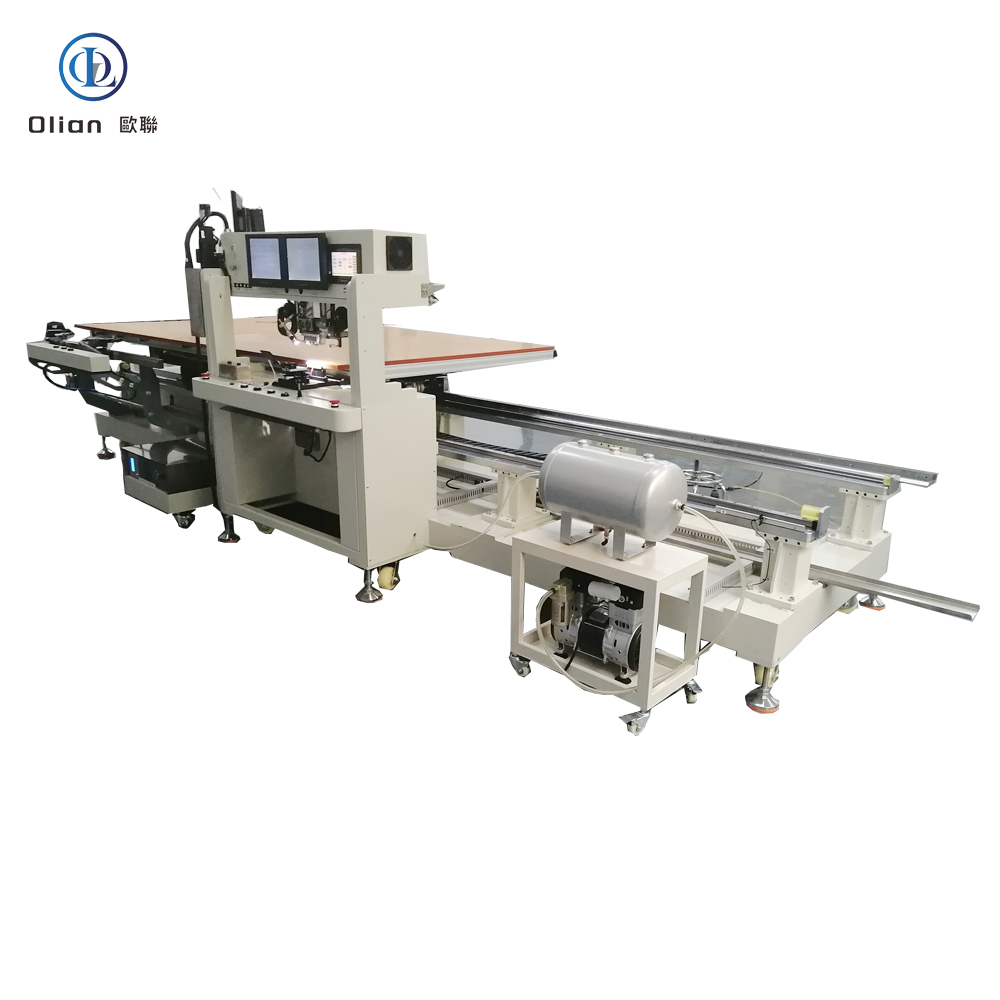

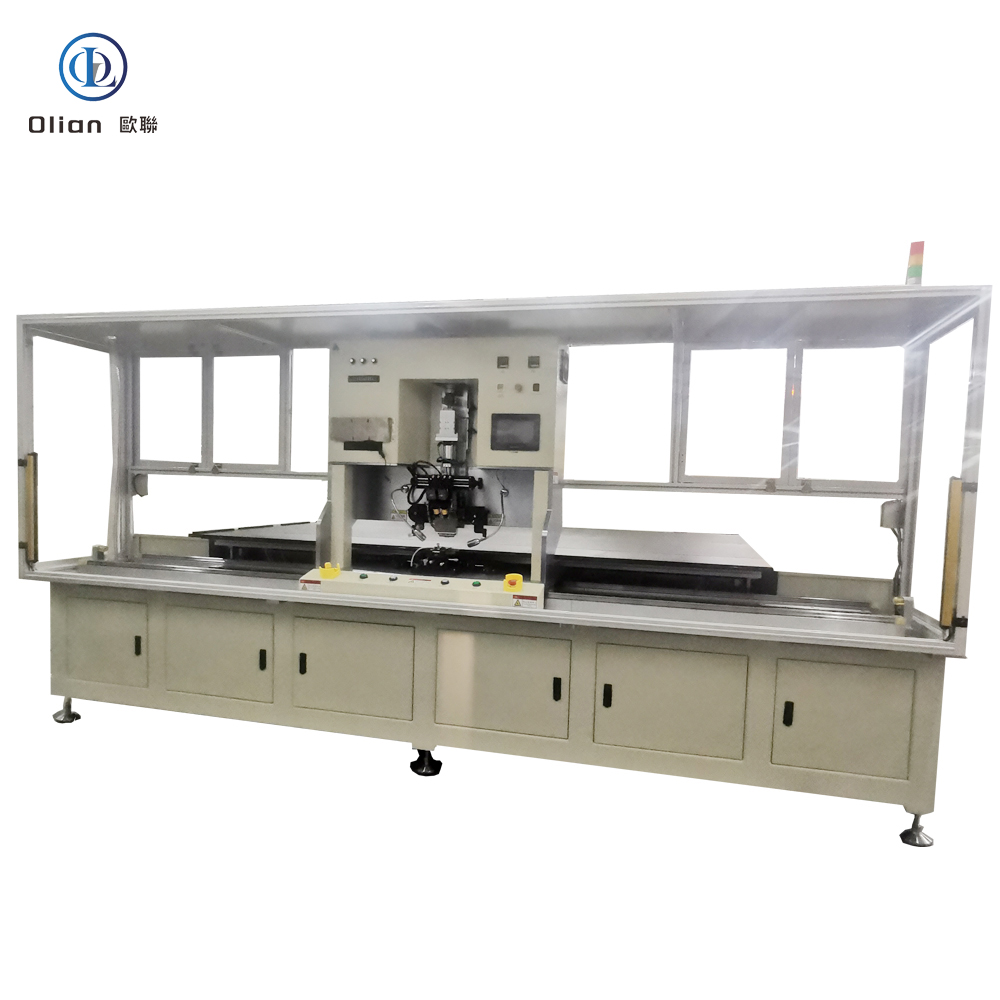


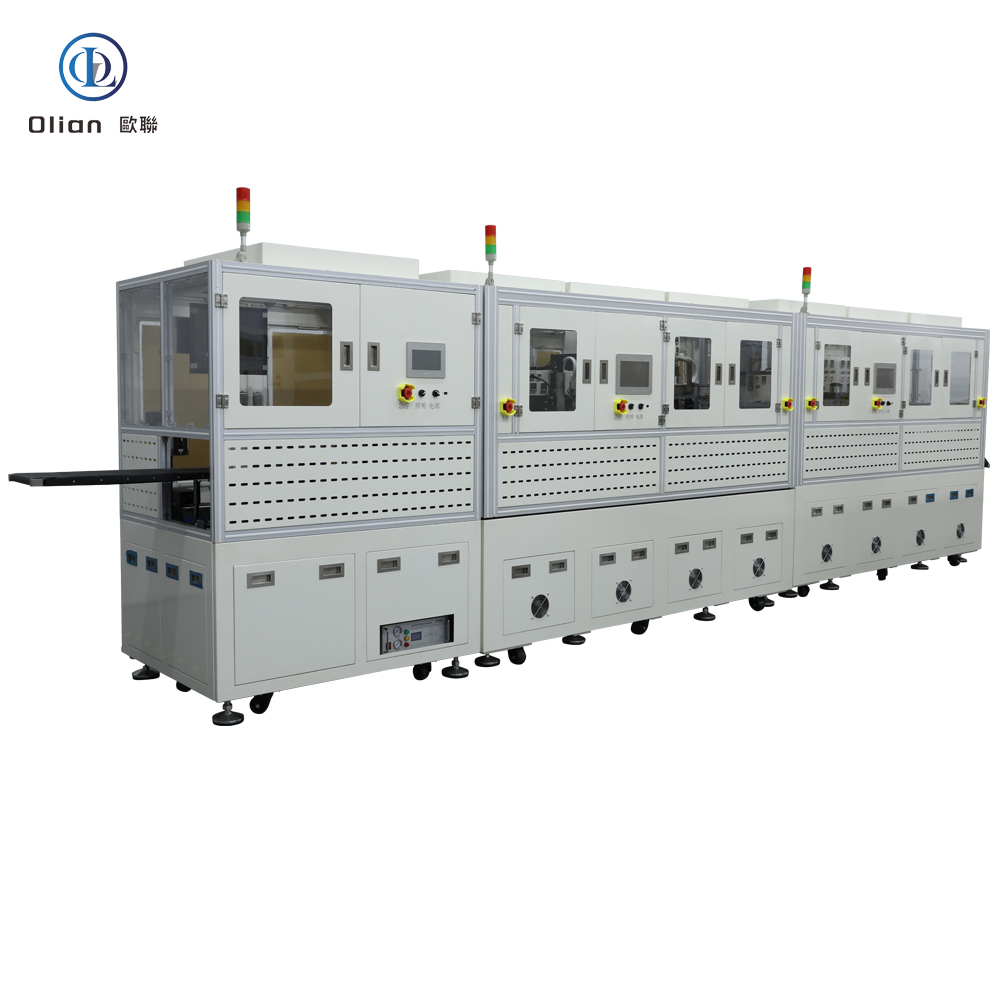

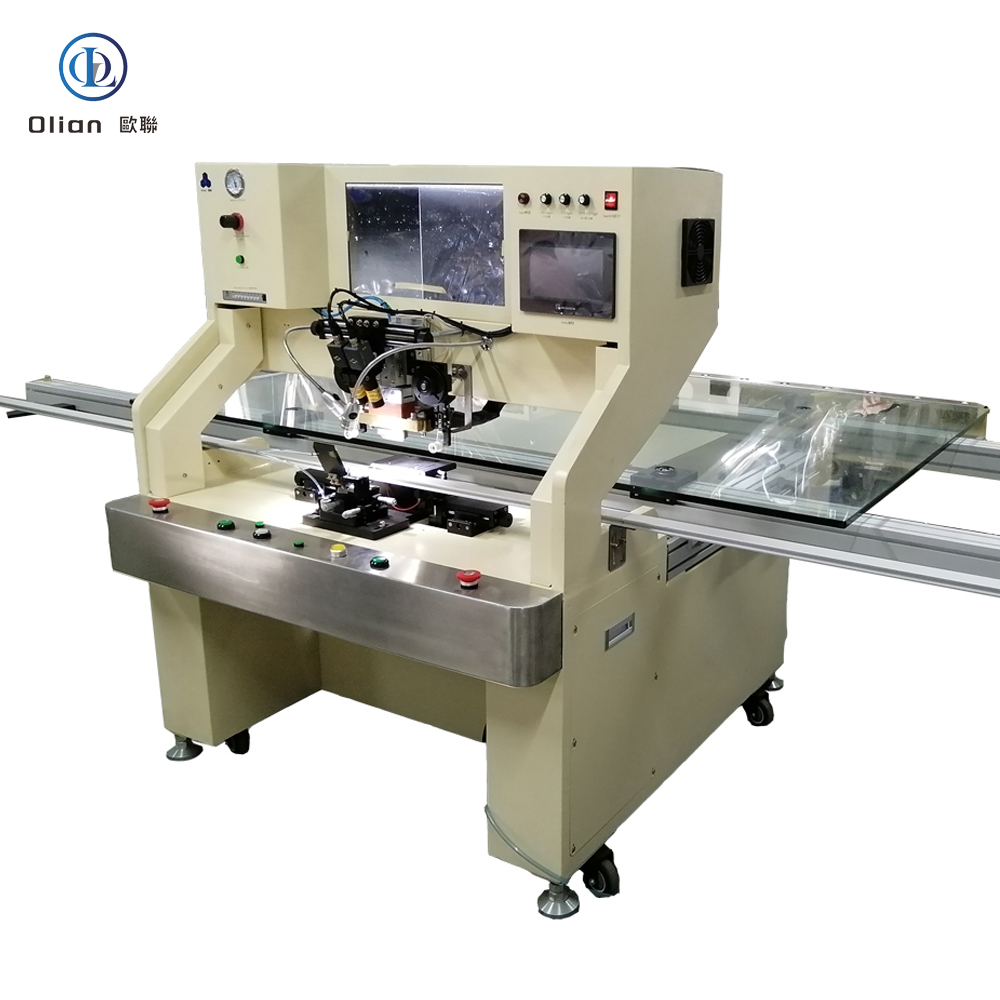
An ACF bonding machine is a servo-controlled pulse-heat press that laminates anisotropic conductive film onto a substrate, then bonds a second component—IC, flex, COF, or glass—using precisely programmed temperature, pressure, and time.
The goal is electrical contact in the vertical direction only, eliminating short circuits laterally.
The same machine also reworks defective panels by removing the old film and rebonding a new piece, saving a $300 TV screen or a $150 phone OLED.
Modern platforms handle 1-inch wearables to 100-inch TVs with ±1 µm alignment, ±0.5 °C thermal stability, and 0.01 MPa force resolution.
ACF is a 25–45 µm epoxy film loaded with 3–10 µm conductive spheres—nickel, gold-coated plastic, or copper-silver alloy.
During bonding, heat softens the resin and pressure compresses spheres between opposing pads.
The sphere count per pad is statistically designed so that at least three particles touch, giving < 30 mΩ contact resistance vertically.
Because neighboring pads are 20–50 µm apart, lateral particle density is too low to create a leakage path (> 1 GΩ isolation).
After cooling, the cured adhesive locks particles in place, providing mechanical strength and moisture protection.
Bonding Head: Titanium alloy, diamond-lapped to 0.5 µm flatness, DLC-coated for anti-stick, lasts 200,000 cycles.
Pulse Heater: 600 W cartridge, embedded K-type thermocouple, ramp 200 °C/s, overshoot < 0.5 °C.
Force Loop: Voice-coil or servo motor, 24-bit encoder, 0.1 kg resolution, 2 ms response; active gravity cancellation for 25 µm glass.
Vision System: 12 MP global-shutter CMOS, telecentric lens, coaxial + side LED, sub-pixel edge detection repeatable to 0.2 µm.
Motion Stage: Cross-roller bearings, 0.05 µm linear encoder, feedback at 20 kHz, granite base with passive vibration isolation.
ACF Tape Unit: Stepper-driven feed, tungsten-steel cutter, anti-static vacuum hold-down, waste take-up spool.
Real-time Linux kernel guarantees < 1 ms jitter; PID temperature loop updated at 10 kHz.
Recipe manager encrypts parameters—temperature, pressure, time, ramp rate, cooling rate—per product QR code.
MES interface via OPC-UA uploads cycle data, resistance values, and images for full traceability.
AI predictor analyses heater resistance drift and forecasts failure 200 cycles in advance.
Remote VPN allows OEM engineers to debug without on-site visit, cutting downtime 30 %.
Consumer Electronics: Smartphone OLED, tablet LCD, laptop mini-LED, smartwatch flexible AMOLED.
TV & Signage: 32″–100″ 4K/8K LCD, QLED, mini-LED, curved and foldable screens.
Automotive: Instrument clusters, center-stack OLEDs, head-up displays, rear-seat entertainment.
Medical: Surgical monitors, diagnostic tablets, wearable ECG patches.
Industrial & Aerospace: Avionics displays, factory HMI panels, military rugged tablets.
ACF bonding machine, ACF bonder, anisotropic conductive film bonding machine, LCD ACF bonding, OLED ACF bonding, TV panel ACF repair, pulse heat ACF machine, constant temperature ACF bonding, COF ACF bonding, FPC ACF bonding, TAB ACF bonding, IC ACF bonding, 100 inch ACF bonding, 8K display ACF bonding, foldable phone ACF bonding, automotive ACF bonding, medical device ACF bonding, China ACF bonding machine, automatic ACF bonder, ACF bonding accuracy 1 micron, ACF bonding temperature 220 C, ACF bonding pressure 1 MPa, vertical conduction horizontal insulation, lead-free ACF bonding, ROHS compliant ACF bonding.
Copper-Core ACF: Cu-Ag particles cut material cost 50 % while keeping < 20 mΩ contact resistance.
Green Refrigerants: Closed-loop cooling replaces water with R1234ze, reducing carbon footprint 30 %.
AI-Driven Profiles: Neural networks auto-optimize temperature ramps for each glass type, pushing yield to 99.9 %.
Micro-LED Bridge: Same ACF platform bonds 20 µm × 20 µm micro-LED dies onto glass backplanes.
Roll-to-Roll ACF: Reel-fed film and die-bond-on-the-fly reach 3,000 UPH for smart-glass.
Cold-Laser Assist: Femtosecond laser pre-treats pads at room temperature, enabling 120 °C bond for heat-sensitive flexible OLED.
An ACF bonding machine is no longer a niche press—it is the critical gateway between microscopic IC bumps and macroscopic display glass.
By mastering sub-micron alignment, single-degree thermal control and real-time force feedback, the latest ACF bonders deliver sub-3-second cycles with 99.9 % yield and full Industry 4.0 traceability.
Whether you are a display OEM chasing 0.9 mm bezels, a TV repair center reworking panels, or a micro-LED start-up prototyping smart-glass, investing in an AI-enhanced, IoT-connected ACF bonding platform future-proofs your process.